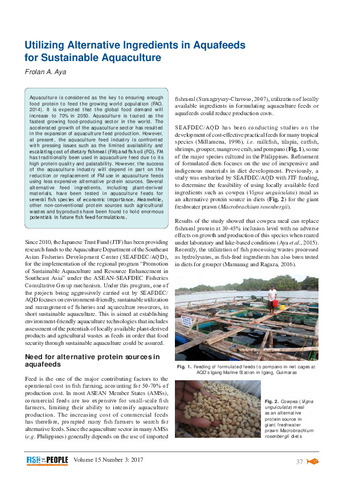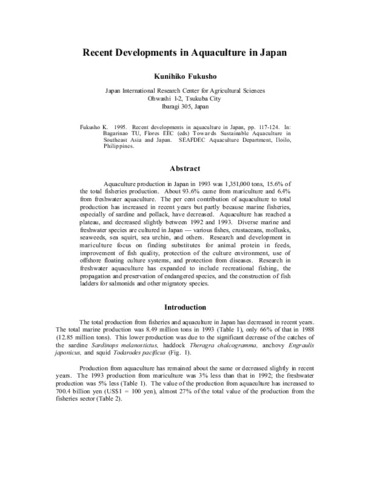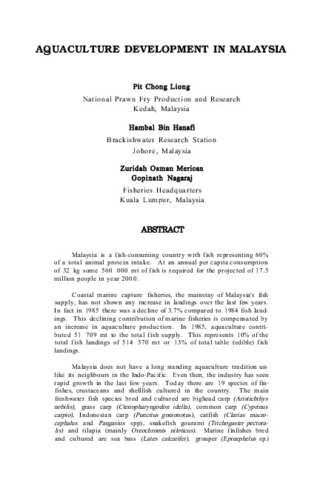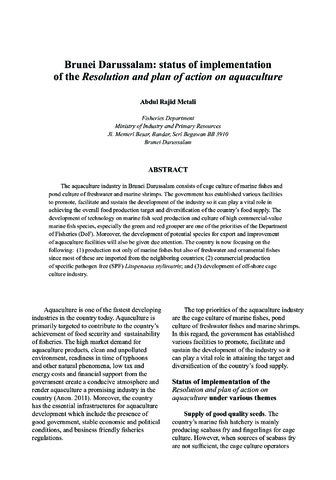Utilizing alternative ingredients in aquafeeds for sustainable aquaculture
Share
Abstract
Aquaculture is considered as the key to ensuring enough food protein to feed the growing world population (FAO, 2014). It is expected that the global food demand will increase to 70% in 2050. Aquaculture is touted as the fastest growing food-producing sector in the world. The accelerated growth of the aquaculture sector has resulted in the expansion of aquaculture feed production. However, at present, the aquaculture feed industry is confronted with pressing issues such as the limited availability and escalating cost of dietary fishmeal (FM) and fish oil (FO). FM has traditionally been used in aquaculture feed due to its high protein quality and palatability. However, the success of the aquaculture industry will depend in part on the reduction or replacement of FM use in aquaculture feeds using less expensive alternative protein sources. Several alternative feed ingredients, including plant-derived materials, have been tested in aquaculture feeds for several fish species of economic importance. Meanwhile, other non-conventional protein sources such agricultural wastes and by-products have been found to hold enormous potentials in future fish feed formulations.
Suggested Citation
Aya, F. A. (2017). Utilizing alternative ingredients in aquafeeds for sustainable aquaculture. Fish for the People , 15(3), 37-44. http://hdl.handle.net/20.500.12066/1291
Subject
Collections
Related items
Showing items related by title, author, creator and subject.
-
Recent developments in aquaculture in Japan
Fukusho, K. (Aquaculture Department, Southeast Asian Fisheries Development Center, 1995)Aquaculture production in Japan in 1993 was 1,351,000 tons, 15.6% of the total fisheries production. About 93.6% came from mariculture and 6.4% from freshwater aquaculture. The per cent contribution of aquaculture to total ... -
Aquaculture development in Malaysia
Liong, Pit Chong.; Hanafi, Hambal Bin.; Merican, Zuridah Osman.; Nagaraj, Gopinath. (Aquaculture Department, Southeast Asian Fisheries Development Center, 1988)Malaysia is a fish-consuming country with fish representing 60% of a total animal protein intake. At an annual per capita consumption of 32 kg some 560 000 mt of fish is required for the projected of 17.5 million people ... -
Brunei Darussalam: Status of implementation of the resolution and plan of action on aquaculture.
Metali, Abdul Rajid (Aquaculture Department, Southeast Asian Fisheries Development Center, 2011)The aquaculture industry in Brunei Darussalam consists of cage culture of marine fishes and pond culture of freshwater and marine shrimps. The government has established various facilities to promote, facilitate and sustain ...





